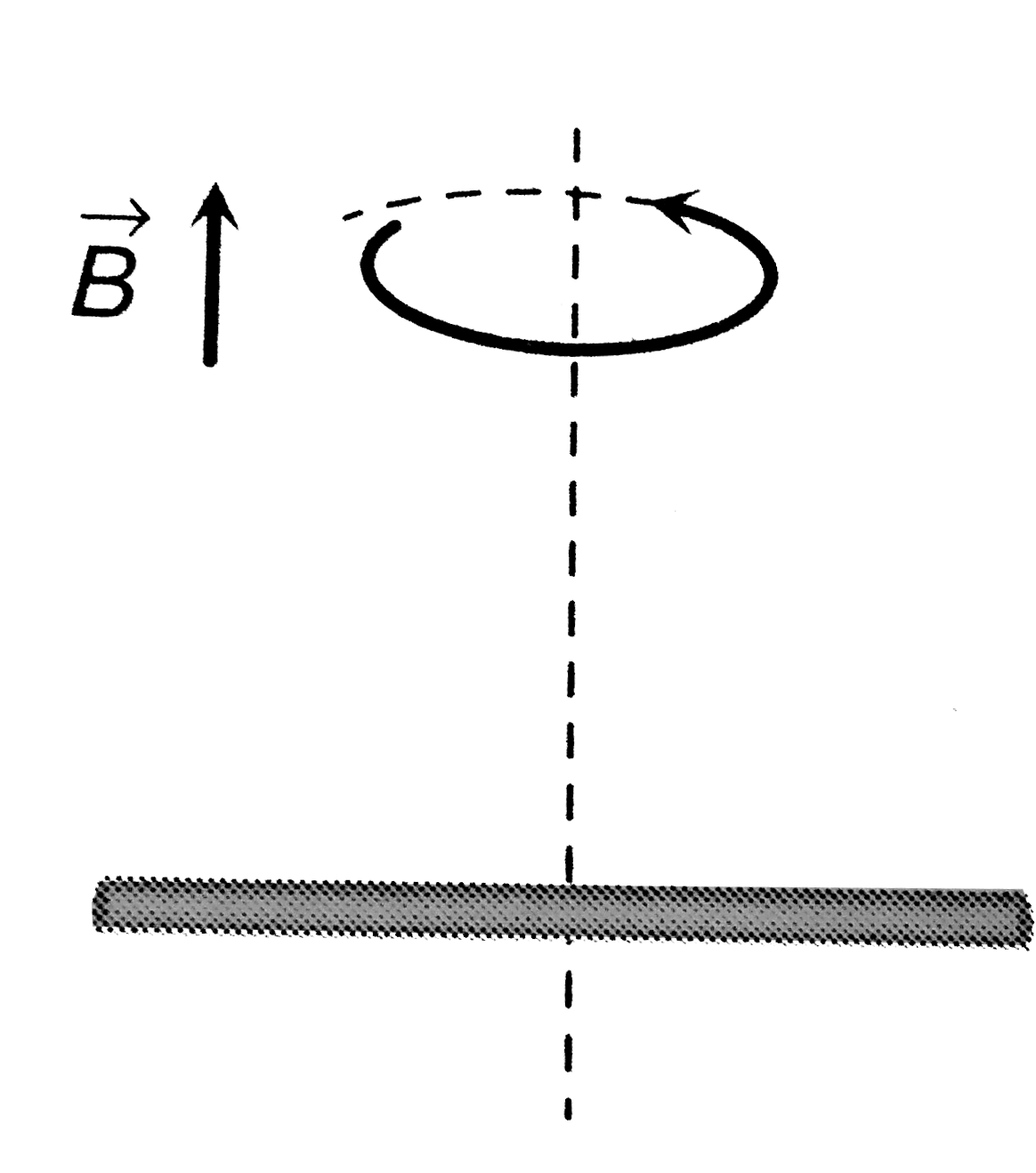There is a conducting rod of length 2L that lies along x-axis from x=−L to x=L. If rod moves with velocity (v=v0ˆi) In the magnetic field (→B=B0ˆk), then induced emf bbetween ends of rod is
Zero
(23B0Lv0)
(13B0Lv0)
(2B0Lv0)
To find the induced electromotive force (emf) between the ends of a conducting rod moving in a magnetic field, we can use the formula for induced emf given by:
emf=L⋅(v×B)
Where:
- L is the length vector of the rod,
- v is the velocity vector of the rod,
- B is the magnetic field vector.
1. Identify the Length Vector:
The rod is positioned along the x-axis from x=−L to x=L. The length of the rod is 2L, and the length vector L can be represented as:
L=2L^i
2. Identify the Velocity Vector:
The rod moves with a velocity given by:
v=v0^i
3. Identify the Magnetic Field Vector:
The magnetic field is given as:
B=B0^k
4. Calculate the Cross Product:
We need to calculate v×B:
v×B=(v0^i)×(B0^k)
Using the right-hand rule and the properties of cross products, we find:
^i×^k=−^j(since ^i,^j,^k are orthogonal)
Therefore:
v×B=v0B0(−^j)=−v0B0^j
5. Calculate the Induced emf:
Now substitute L and v×B into the emf formula:
emf=L⋅(v×B)=(2L^i)⋅(−v0B0^j)
Since ^i⋅^j=0 (the dot product of perpendicular vectors is zero):
emf=2L⋅(−v0B0)⋅0=0
Conclusion:
The induced emf between the ends of the rod is:
emf=0
- L is the length vector of the rod,
- v is the velocity vector of the rod,
- B is the magnetic field vector.
The rod is positioned along the x-axis from x=−L to x=L. The length of the rod is 2L, and the length vector L can be represented as:
L=2L^i
The rod moves with a velocity given by:
v=v0^i
The magnetic field is given as:
B=B0^k
We need to calculate v×B:
v×B=(v0^i)×(B0^k)
Using the right-hand rule and the properties of cross products, we find:
^i×^k=−^j(since ^i,^j,^k are orthogonal)
Therefore:
v×B=v0B0(−^j)=−v0B0^j
Now substitute L and v×B into the emf formula:
emf=L⋅(v×B)=(2L^i)⋅(−v0B0^j)
Since ^i⋅^j=0 (the dot product of perpendicular vectors is zero):
emf=2L⋅(−v0B0)⋅0=0
The induced emf between the ends of the rod is:
emf=0
Similar Questions
The magnetic field in a region is given by →B=B0Lyˆk where L is a fixed length. A conducting rod of length L lies along the Y - axis between the origin and the point (0,L, 0). If the rod moves with a velocity v=v0ˆi , find the EMF induced between the ends of the rod.
View SolutionThe magnetic field in a region is given by →B=B0Lxˆk where L is a fixed length.A conducting rod of length lies along the X-axis between the origin and the point (L,0,0).If the rod moves with a velocity →v=v0ˆj the emf induced between the ends of the rod.
View SolutionA glass rod of length l moves with velocity v in a uniform magnetic field B. What is the e.m.f induced in the rod?
View SolutionA conducting rod OA of length l is rotated about its end O with an angular velocity ω in a uniform magnetic field directed perpendicualr to the rotation. Find the emf induced in the rod, between it's ends.
View SolutionA conducting rod AB of length l is projected on a frictionless frame PSRQ with velocity v0 at any instant. The velocity of the rod after time t is
View SolutionA conducting rod of length 2l is rotating with constant angular speed w about its perpendicular bisector. A uniform magnetic field B exists parallel to the axis of rotation. The e.m.f. induced between two ends of the rod is

View SolutionA conducting rod of length 2l is rotating with constant angular speed w about its perpendicular bisector. A uniform magnetic field B exists parallel to the axis of rotation. The e.m.f. induced between two ends of the rod is

View SolutionA conducting rod of unit length moves with a velocity of 5m/s in a direction perpendicular to its length and perpendicular to a uniform magnetic field of magnitude 0.4T. Find the emf induced between the ends of the stick.
View SolutionA vertical rod of length l is moved with constant velocity v towards east. The vertical component of earth magnetic field is B and angle of dip is θ. The induced e.m.f. in the rod is
View SolutionA copper rod of length l is rotated about one end perpendicular to the magnetic field B with constant angular velocity ω . The induced e.m.f between the two ends is
View Solution
